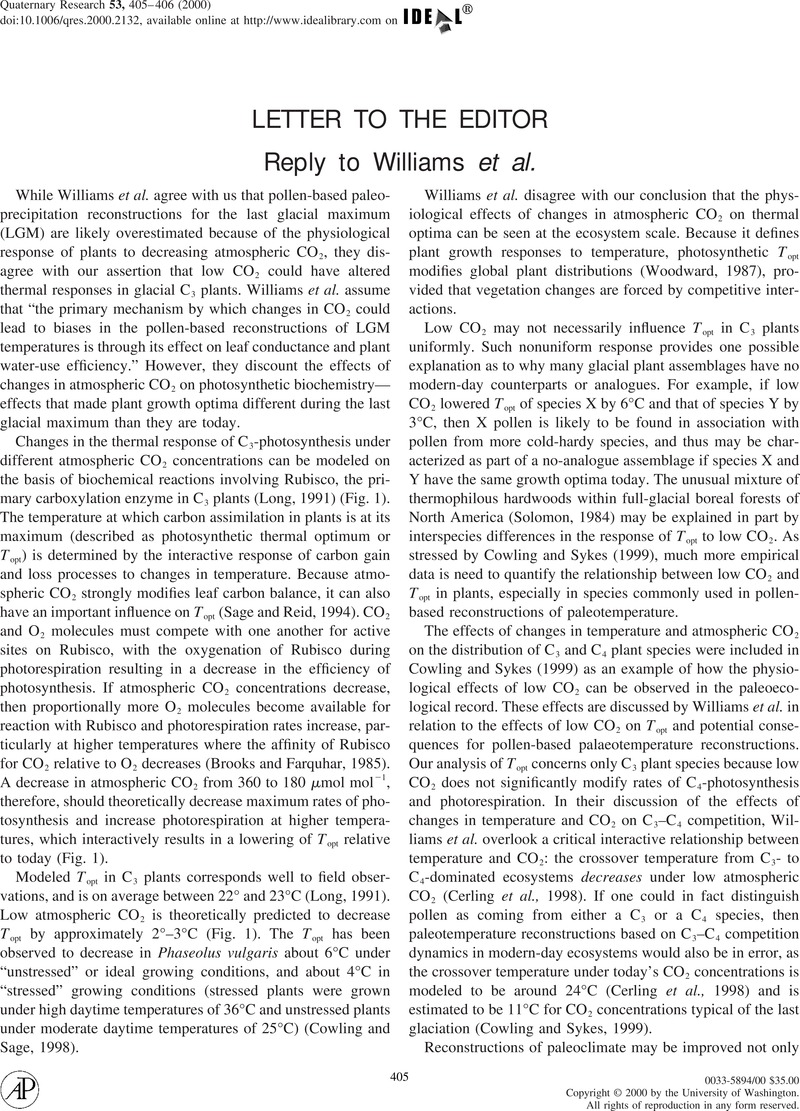Crossref Citations
This article has been cited by the following publications. This list is generated based on data provided by Crossref.
Marchant, Robert
Boom, Arnoud
and
Hooghiemstra, Henry
2002.
Pollen-based biome reconstructions for the past 450 000 yr from the Funza-2 core, Colombia: comparisons with model-based vegetation reconstructions.
Palaeogeography, Palaeoclimatology, Palaeoecology,
Vol. 177,
Issue. 1-2,
p.
29.
HARRISON, SANDY P.
and
PRENTICE, COLIN I.
2003.
Climate and CO2 controls on global vegetation distribution at the last glacial maximum: analysis based on palaeovegetation data, biome modelling and palaeoclimate simulations.
Global Change Biology,
Vol. 9,
Issue. 7,
p.
983.
Marchant, Robert
Boom, Arnoud
Behling, Hermann
Hooghiemstra, Henry
Melief, Bert
Geel, Bas Van
Hammen, Thomas Van der
and
Wille, Michael
2004.
Colombian vegetation at the Last Glacial Maximum: a comparison of model‐ and pollen‐based biome reconstructions.
Journal of Quaternary Science,
Vol. 19,
Issue. 7,
p.
721.
Frenzel, Burkhard
2005.
Progress in Botany.
Vol. 66,
Issue. ,
p.
409.
Thonicke, Kirsten
Prentice, I. Colin
and
Hewitt, Chris
2005.
Modeling glacial‐interglacial changes in global fire regimes and trace gas emissions.
Global Biogeochemical Cycles,
Vol. 19,
Issue. 3,
Marchant, Robert
Berrío, Juan Carlos
Behling, Hermann
Boom, Arnoud
and
Hooghiemstra, Henry
2006.
Colombian dry moist forest transitions in the Llanos Orientales—A comparison of model and pollen-based biome reconstructions.
Palaeogeography, Palaeoclimatology, Palaeoecology,
Vol. 234,
Issue. 1,
p.
28.
Prentice, I. C.
and
Harrison, S. P.
2009.
Ecosystem effects of CO<sub>2</sub> concentration: evidence from past climates.
Climate of the Past,
Vol. 5,
Issue. 3,
p.
297.



